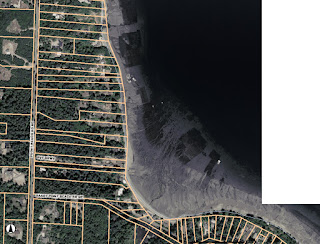"It's the end of the world!"
Pacific County's Willapa Bay growers were most vocal, portraying a Mayan "end of the world apocalypse" if classification of Japanese eelgrass as a weed remained only on commercial shellfish beds. But reality, as in all frenzies, is quite different. WDFW harvest records for Willapa Bay show something quite far from the end of the world:
2006: 964,638 pounds of Manila clams harvested
2011: 1,166,665 pounds of Manila clams harvested
2006: 1,373,105 oysters harvested
2011: 1,955,131 oyster harvested
Agency Oppostion Ignored
Despite comments from state agencies opposing expansion of Japanese eelgrass being classified a Class C noxious weed, and even the Noxious Weed Board's own advisory committee suggesting it not be adopted, Japanese eelgrass has now been declared a "Class C Noxious Weed" in all of Washington's marine waters. Despite clear evidence showing it has become a naturalized part of the ecosystem relied on by migratory birds as a food source and fish for habitat, the Noxious Weed Board instead relied on the shellfish industry's unfounded complaints that limiting control to only shellfish beds would be a disaster of epic proportions.
Agency Comments
WDFW: The Washington Department of Fish and Wildlife (WDFW) is strongly opposed to this proposal...
DNR: DNR does not support the WSNWCB expanding the listing of Z. japonica as a Class C noxious weed
Noxious Weed Control Board Advisory Committee: WSNWCB's advisory committee has recommended that this proposal not be adopted at this time
Department of Ecology's Permit for Control: At this time, the Department of Ecology’s (ECY) draft NPDES permit process for Japanese eelgrass is exploring the option of allowing the use of the herbicide ClearCast (imazamox) on commercial clam beds in Willapa Bay only. [from the decision paper]
From the Pacific Coast Shellfish Growers Association"Those growers believe very strongly that if this invasive weed is not controlled everywhere in Willapa Harbor that the entire Harbor's ecosystem will be permanently damaged, "The native shellfish which were brought to near extinction by over harvesting and whose habitat is now taken over by non-native Pacific oysters and non-native Manila clams would have a different view. As would the native Ghost shrimp being eradicated by the shellfish grower's chemical spraying.
From Grays Harbor Oyster Growers Association
"The entire food web of the estuary is being negatively impacted, and the few species that could be utilizing japonica have a multitude of other food and cover options readily available." Based on what? The shellfish industry has cleared the natural oyster reefs which used to exist and provide structure for other food sources to grow in. Ghost shrimp, as noted above, which did survive are eradicated through chemical spraying. Even the Noxious Weed Board noted: Although active research is ongoing and the net ecological impact of Japanese eelgrass is still unclear, the shellfish industry has indicated that this nonnative, invasive species is negatively impacting shellfish production and causing economic loss as well as causing some ecological harm.
Northern Oyster
"we have developed a vast amount of experience in dealing with invasive species" It was the introduction of the non-native and invasive Pacific oyster and non-native Manila clams in Point Reyes Shoreline Wilderness EIS which, in part, caused the National Park System to allow a commercial shellfish farm's lease to expire, so a natural ecosystem could be restored. In Willapa Bay, these native species are Olympia oysters and Littleneck clams.
Willapa-Grays Harbor Oyster Association and Integrity
Controlling Japanese eelgrass will allow the shellfish industry to "protect the integrity of Willapa Bay." Integrity is something everyone should think about. It's difficult to attain but easy to lose.


































